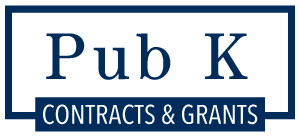The Ninth Circuit reversed a lower court’s decision denying a motion to dismiss under the public disclosure bar, finding the district court erred in concluding that patent hearings did not qualify as administrative hearings for the purpose of the bar.
United States Court of Appeals for the Ninth Circuit No. 21-15420; U.S. ex rel. Zachary Silbersher v. Allergan Inc., Allergan USA Inc., Allergan Sales LLC, Forest Laboratories Holdings Ltd., Adamas Pharma LLC, Adamas Pharmaceuticals, Inc.
In Brief
The Ninth Circuit reversed and remanded a district court’s decision denying a motion to dismiss a qui tam complaint under the public disclosure bar. The circuit panel found the lower court erred in concluding that a patent hearing was neither an administrative hearing nor the kind of investigative fora described in the statute. Because the lower court did not reach a conclusion about the relator’s status as an original source of his allegations, the court remanded the case for further consideration on this element.
Background
Allergan Inc. and its co-defendants appealed a district court’s denial of their motion to dismiss a qui tam case alleging they violated the FCA by fraudulently obtaining patents on two drugs to combat Alzheimer’s disease and, by virtue of these patents, preventing generic drug competitors from entering the market.
Relator Zachary Silbersher, a patent attorney, alleged that the defendants unlawfully obtained several patents critical to two drugs used to treat Alzheimer’s disease, Namenda XR and Namzaric. With these patents, the defendants were able to block competitors from producing generic versions of both drugs. According to Silbersher, this helped the defendants maintain an artificially high price for the drugs and cost the government millions of dollars.
Silbersher had brought other qui tam suits on similar bases. In Silbersher v. Valeant Pharmaceuticals International Inc., the district court found the relator’s claims barred by the public disclosure bar, as the alleged wrongdoing was raised during proceedings of the U.S. Patent and Trademark Office. While Silbersher argued that PTAB hearings are not one of the enumerated fora in the public disclosure bar, the court was not persuaded by semantics and dismissed the case.
In this case against Allergan, the district court held that the public disclosure bar did not apply. First, the court found that there was no preexisting government investigation concerning the alleged fraud. The court also rejected the conclusion in Valeant that a PTAB proceeding was a federal hearing under the FCA. The court concluded the Congress carved out exceptions in the definition of federal hearing for the explicit purpose of excluding such proceedings from the public disclosure bar.
The defendants appealed this decision.
The Appeal
The defendants again argued the public disclosure bar should apply. The Ninth Circuit noted that the Supreme Court has viewed the public disclosure bar as having a “broad scope.” Against that backdrop, the court held that the description in the FCA clearly includes a patent prosecution as an administrative hearing, as defined in the first prong of the public disclosure test. The court also held that Congress intended the second prong of the test to cover a wide array of investigatory processes. The court noted that the text intended to cover reports, hearing, audits, and investigations by federal offices, finding no reason to exclude a PTAB proceeding from the scope of the information-gathering methods explicitly listed in the text.
The circuit panel was not persuaded by the relator’s counterarguments. Silbersher argued that when Congress added the government-as-a-party language to the first prong of the test, it intended to exclude administrative hearings in which the government was not a party from the public disclosure bar, including those that would otherwise be captured by the plain language of the second prong. The court concluded this interpretation would read most of prong 2 out of existence. That some hearings might be encompassed by both prong 1 and 2 was irrelevant to the court. In fact, the court noted that when an inventor appeals the rejection of a patent, the appeal could fall under prong 1, but when an application is approved, the hearing would fall under prong 2.
Because the district court erred in rejecting the PTAB hearings as qualifying events under the public disclosure bar, the Ninth Circuit reversed and remanded its decision to deny the defendant’s motion to dismiss. The circuit court noted that the district court had not reached a conclusion on whether Silbersher qualified as an original source of his allegations, so it directed the district court to consider this element on remand.





